Leg Cramps in Menopause: Does Compression Help?
Women going through menopause and perimenopause can encounter many symptoms, including hot flushes, emotional changes, low energy, and/or muscle cramps. Changes in hormone levels, specifically estrogen and progesterone, are the primary cause of these symptoms. When suffering from leg cramps, compression socks can provide welcome relief and even prevent them.
So, how do compression socks help with leg cramps during menopause?
Compression socks support and massage the lower legs, boost peripheral circulation, and reduce the likelihood of swelling, discomfort, and cramps. Better blood flow and muscle support help prevent leg cramps. So, wearing compression clothing can prevent cramps from setting in as well as improve your sleep quality.
Read on to find out why you can rely on compression socks to fight leg cramps and other uncomfortable symptoms of menopause and perimenopause.
What Causes Leg Cramps in Menopause?
During perimenopause (which the Mayo Clinic defines as the time “around menopause”), estrogen levels decline. Scientific research has shown that this hormone reduces inflammation and swelling in our bodies - which is why decreases in estrogen can trigger joint and leg pain.
Additionally, low estrogen levels have been reported by scientific studies to be linked with circulatory system and heart problems. In fact, estrogen can protect women from issues with blood flow or heart function. During menopause, women may start to experience circulatory problems they didn’t have before - including cold feet, swelling, tingling, developing varicose veins, or even restless leg syndrome.
Finally, leg cramps during menopause are also linked to dehydration (which has been found by scientific studies to be connected to low estrogen levels) and to posture problems, including the possible onset of osteoporosis (loss of bone density caused by low calcium levels in the bones).
How Can Compression Help with Menopause Leg Cramps?
Compression garments deliver two types of action on the body. They boost localized blood flow, decreasing the risk of swelling and discomfort while improving overall circulation. Also, they provide therapeutic support and a gentle massage which can relieve pain, improve stability, and can lower fatigue. Graduated compression socks help push the blood back towards the heart and prevent it from pooling around the ankles, which can cause edema, blood clots, or varicose veins.
Wearing compression socks and calf sleeves could prevent menopause leg cramps or leg pain. These garments also provide important relief from the pain and discomfort of cramps. Finally, by boosting peripheral blood flow, they may warm up cold feet and minimize the discomfort of restless leg syndrome, among others.
The Benefits of Compression for Leg Cramps in Menopause
From a reduction in menopause symptoms like leg pain and swelling to better circulatory system function, compression socks are a great tool to improve your comfort and wellbeing.
Reduced Pain and Discomfort
Menopause leg cramps are caused in large part by a mix of poor peripheral circulation and dehydration, which could be due to low estrogen. Luckily, scientists have found that compression socks boost lower-leg blood flow and reduce swelling and pain in those areas. The therapeutic pressure compression socks apply on the legs provides a light massage for the muscles, which relieves the pain and discomfort accumulated during the day.
By increasing blood flow and reducing the risk of feet, ankles, and lower legs swelling, compression socks also prevent blood clots and edema to help keep women healthier throughout perimenopause and menopause.
Reduced Edema and Swelling
The increase in blood flow coupled with therapeutic massage in the lower legs works to relieve swelling and inflammation. This is why compression socks and stockings are recommended by scientists and researchers to those who work on their feet all day or sit for extended periods of time. Edema can be triggered not just by blood pooling at the extremities, but also when the lymph nodes are struggling to properly drain lymphatic fluid (often in the legs). Compression therapy can reduce the impact of both and even prevent them.
Muscle and Joint Support
Studies show that over 80% of women experience menopausal symptoms, and 1 in 6 women in menopause or perimenopause have muscle and joint pain, according to research from Rush University in Chicago. Moreover, activity levels impact how much muscle support we may need during this period. While physical activity is recommended to prevent osteoporosis and improve heart health, it may be increasingly fatiguing or painful to do high-impact exercise during perimenopause and menopause.
Wearing compression socks during exercise adds a layer of support and stability for the lower legs. The tight grip they have on the calf muscles and the joints can reduce the impacts of running, while also keeping the Achilles tendon and calf muscles better aligned.
Improved Sleep Quality
Improvements in blood flow and better lymphatic drainage from compression socks can improve the quality of your sleep during menopause. Additionally, compression socks help calm the symptoms of restless legs, tingling, or cold feet. So, compression can help you get a good night of sleep during menopause or even make a good night’s sleep, even better.
How to Use Compression for Leg Cramps during Menopause
To relieve menopause leg cramps you just need to ensure that your compression socks are the right size and fit for you and that you’re choosing the best pair for your activity and preferences. Whether you choose to use your compression socks every day, all day long, or overnight, they are safe to wear. Be sure you find them comfortable, if they are not comfortable, use the following tips to find the right pair of compression socks during your menopause journey.
Compression Garments to Consider
While all compression therapy can improve circulation and reduce swelling, it’s a matter of personal preference if you go for fuller or less coverage. Knee-high compression socks are the classic, most versatile solution. They fit with any outfit and can be worn all day long. These graduated compression socks are tighter at the ankle This stimulates blood flow to and from the lower legs and boosts circulation when you’re sitting or standing for longer periods of time.
If you want fuller coverage, you can also benefit from compression above the knee with tights and stockings. These can give the added benefit of supporting the knee joint, too.
For those looking to wear sandals, but still wanting extra ankle support, open-toe compression socks give you all the benefits of classic socks, while freeing the toes. Finally, opt for compression sleeves if you want to boost blood flow to the calf muscles but are looking to keep feet completely bare.
Choosing the Right Compression Level
Not all compression socks are the same. In fact, there are three levels of therapeutic pressure we offer in our socks:
- 15-20 mmHg – everyday compression, tight enough that you can reap the benefits on circulation, but great for first-time users and for those looking to wear their socks for longer periods of time or while exercising;
- 20-30 mmHg – firmer compression, generally recommended to those suffering from lymphedema or moderate edema, spider or varicose veins;
- 30-40 mmHg – prescription-only socks that you can use to treat health conditions such as deep vein thrombosis or venous insufficiency.
For treating leg cramps during menopause, most women will benefit from wearing the 15-20 mmHg range, but it’s worth discussing with your doctor if you have other health concerns, as firmer socks could make a big difference.
Understanding Sizing and Fit
For compression socks to effectively stimulate blood flow and support the muscles, they should fit tight, but the squeeze should not become uncomfortable. We recommend measuring the circumference of your calf muscles and then checking against a sizing table to find the best size for you.
Once you’ve put your socks on, check that the heels and toes are placed comfortably in the respective parts of the sock. This will ensure that you’re getting the right level of pressure throughout the feet, ankles, and legs. Knee-high socks should reach just underneath the knee, without bunching or folding. Your socks should stay in place for as long as you wear them, not rolling down the lower legs, but not feeling so tight that they start to hurt.
Duration & Frequency of Use
If you’re new to compression socks, it’s a good idea to try wearing them for a few hours at a time, slowly getting used to the sensation of pressure on the lower limbs. Gradually increase pressure as you feel comfortable, and be sure to consult your physician if you have any concerns.
Compression socks are convenient, easy to carry with you wherever you go, and safe to keep on 24 hours if you wish to do so. Just listen to your body and adjust as needed.
Complementary Strategies for Managing Leg Cramps in Menopause
Managing menopause leg cramps is made easier by compression garments. Compression socks are so convenient and easy to use anywhere, at any time. In addition to wearing compression socks, here are some other tips women may find useful in dealing with leg pain.
Exercise Regularly & Maintain a Healthy Weight
Being overweight can put extra pressure on the joints and veins, causing circulatory problems in the lower legs and raising the potential for aches and pains. Maintaining a healthy weight will relieve these pressures and keep you fit and energized throughout the menopausal years and beyond. Moreover, regular exercise improves bone health and muscle strength, which can better support your joints.
Hormonal changes could affect your metabolism. Many women complain of weight gain during menopause, without having made a significant change in their behaviors or diet. This is why it is more important than ever to stay active and exercise, helping you keep fit despite all the changes your body is going through. Regular physical activity can include long walks, gentle exercise like yoga or Pilates, or swimming, if you don’t want to take up anything that is too high impact.

Try Massage Therapy
It can be useful to double up compression and massage therapy to reduce leg pain and discomfort. Massage can also contribute to loosening tight muscles, reducing the risk of cramping when you’re trying to relax.
Pay Attention to Your Diet & Hydration
We’ve seen above that dehydration can cause leg cramps during menopause. This is even more so the case with athletes who can become dehydrated while racing or exercising (especially in hot weather), but it affects non-athletes alike. During menopause, women may find it harder to stay on top of their hydration levels, so proper hydration is particularly important. Talk to your healthcare provider to see if dietary changes can be appropriate.
Additionally, a healthy diet complements exercise in keeping your weight at optimal levels and preventing any complications. You should get nutrients and vitamins from your food that support your circulatory system and reduce the risk of cramping (e.g. magnesium). If you don’t, it may be a good idea to take supplements.
Interestingly, a study on vegans has found that they tend to have fewer physical menopausal symptoms than omnivores. Specifically, including leafy greens and cruciferous vegetables into women’s diets seemed to reduce their symptoms.
Talk to Your Doctor About Supplements That May Be Beneficial
Before taking any supplements or making significant changes to your diet, you should always consult a medical professional. During perimenopause, it can be useful to take a blood test and check what deficiencies you may have developed, because even a balanced diet may not cover all your needs.
It may be useful to supplement your regular diet with calcium, multivitamins, collagen (good for connective tissue health), etc. Your doctor may also prescribe hormone replacement therapy if this appears appropriate for your case.
Elevate Your Legs & Avoid Prolonged Sitting or Standing
Finally, to keep pressure off the legs and reduce the risk of them cramping after a long day on your feet, elevating them is very effective. You should also – where possible – avoid long periods of time sitting or standing. If you take a long flight, get up and stretch your legs every now and then (and wear compression socks!). At work, ensure you take regular breaks and move around when you do so. It all contributes to stimulating peripheral circulation and keeping cramps and swelling at bay.
References
Mayo Clinic. (2019). Perimenopause – Symptoms and causes. Mayo Clinic. Read it here.
Harding, A. T., & Heaton, N. S. (2022). The Impact of Estrogens and Their Receptors on Immunity and Inflammation during Infection. Cancers, 14(4), 909. Read it here.
Stachenfeld N. S. (2014). Hormonal changes during menopause and the impact on fluid regulation. Reproductive sciences (Thousand Oaks, Calif.), 21(5), 555–561. Read it here.
Dahm, K. T., Myrhaug, H. T., Strømme, H., Fure, B., & Brurberg, K. G. (2019). Effects of preventive use of compression stockings for elderly with chronic venous insufficiency and swollen legs: a systematic review and meta-analysis. BMC geriatrics, 19(1), 76. Read it here.
Charles, T., Mackintosh, D., Healy, B., Perrin, K., Weatherall, M., & Beasley, R. (2011). Merino wool graduated compression stocking increases lower limb venous blood flow: a randomized controlled trial. Advances in therapy, 28(3), 227–237. Read it here.
Garcia, M. G., Roman, M. G., Davila, A., & Martin, B. J. (2023). Comparison of Physiological Effects Induced by Two Compression Stockings and Regular Socks During Prolonged Standing Work. Human factors, 65(4), 562–574. Read it here.
Talaulikar V. (2022). Menopause transition: Physiology and symptoms. Best practice & research. Clinical obstetrics & gynaecology, 81, 3–7. Read it here.







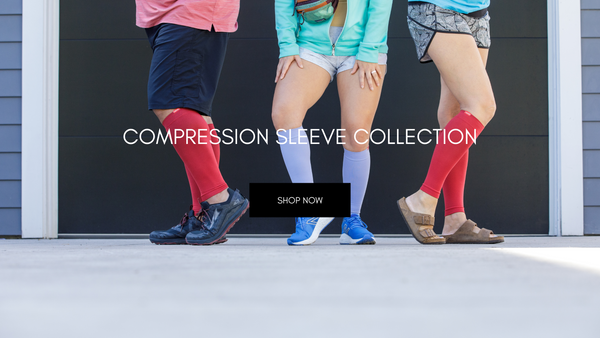
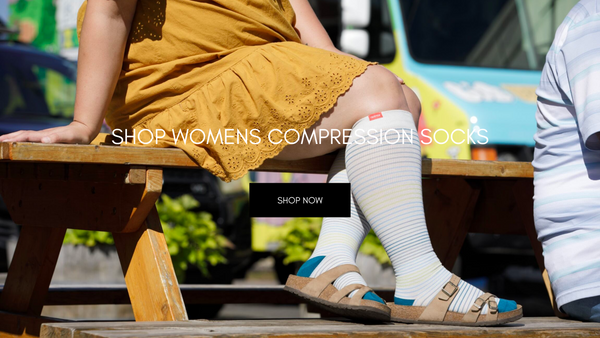
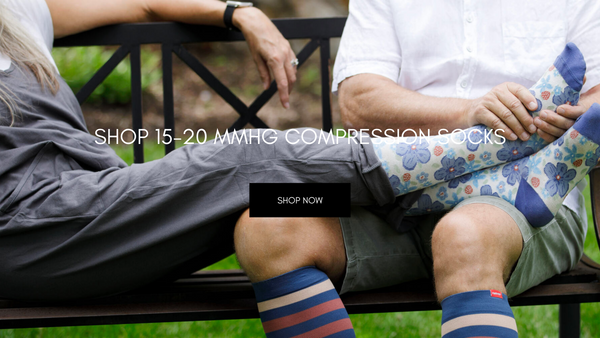


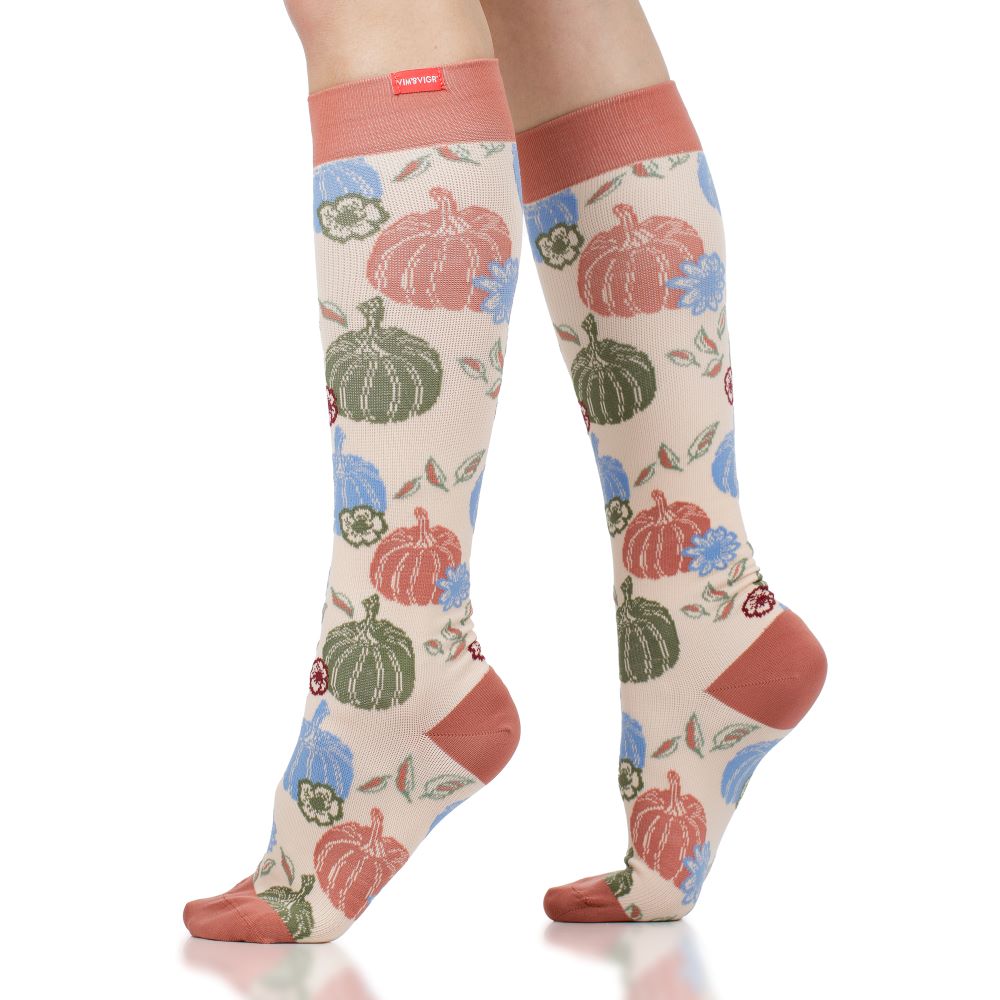
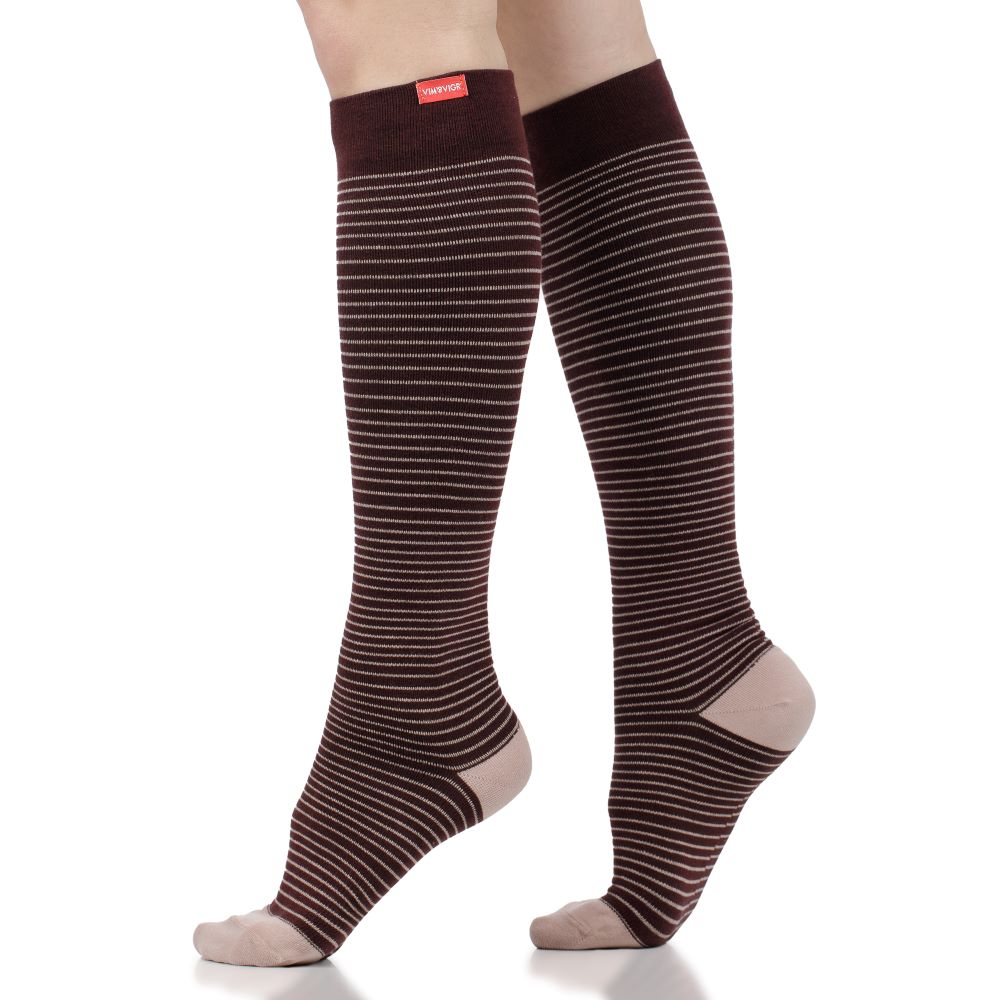
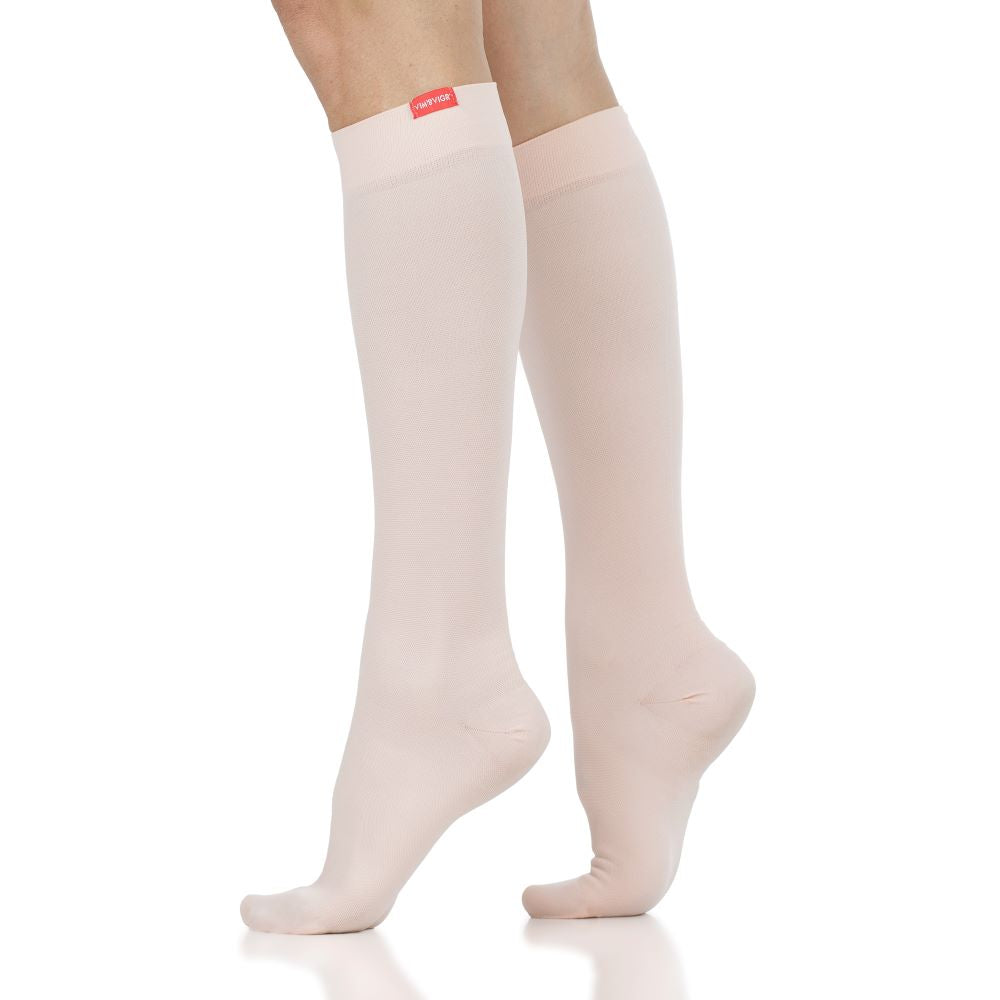






Leave a comment